It’s hard to believe that we published our first list of songs for real bassheads in 2018. In this context, we aren’t talking about music that booms but tracks that rumble and shake well into the inaudible range. What’s the difference? Boom is easy; rumble is work. These tracks are outright difficult for many systems to reproduce. Let’s check out 12 more basshead songs that will challenge your audio subwoofer system like few others.
Boom, Rumble and Shake – What Are You Talking About?
As in the first article, this is a list of songs that contain music with bass information that extends to below 30 Hz. Most car audio systems are designed with subwoofers that are quite efficient from 30 or 35 hertz and up. Since most of the music you hear on the radio has very little information below 35 hertz, those subwoofers usually deliver everything you need. However, there’s another octave or more of low-frequency information that a few artists tap into to add an unreal experience to their music. The tracks listed here show off what an audio system can do below 30 hertz.
When most people think of bass, they think of the lower notes of a bass guitar, a piano, an organ, large kettle drums, a bassoon or whatever they dream up on their synthesizer. For example, a four-string bass can play notes down to 41 Hz. A five- or six-string bass can hit 31 Hz. On the other hand, a pipe organ might have a low C note that’s down at 16 hertz. A few very large organs can go another octave lower with an 8-hertz pipe. I’d love to hear that!
Technically, we can only hear audio information down to 20 Hz. With that said, we can certainly detect information well below that. Audio below 20 Hz is referred to as infrasonic information. To be clear, it’s not subsonic. The word infrasonic describes audio information below the range of human hearing. The word subsonic describes an object traveling at less than the speed of sound. When you see an amplifier with an adjustable or selectable high-pass filter labeled “subsonic filter,” it’s labeled incorrectly.
I read a fantastic comment the other day on Reddit explaining how you could theoretically hear 0 hertz. Playing a 0-hertz note means the subwoofer doesn’t move back and forth. Put another way, 0 hertz is DC (direct current). So, imagine being in your vehicle with all the doors and windows closed. A 0 hertz “sound” would mean that the speaker cones move forward (or rearward) and stay there. It’s the same as connecting them to a battery. It’s not impossible to theorize that you could detect the pressure change when the subwoofer cone moved forward. Of course, if you have many subwoofers in a small vehicle, the pressure change would be even easier to detect. I know it’s silly, but it’s an accurate scenario from a physics standpoint.

The Physics of Subwoofers and Low-Frequency Sound Reproduction
Because it’s appropriate and crucial, we should warn you that playing the basshead songs on this list can be very hard on your amplifiers and subwoofers. As frequencies decrease, the power needed to drive a subwoofer increases. Likewise, a subwoofer cone has to move four times as far for every octave lower it plays. So if you’re banging away on rap music with a 40 Hz bass line and suddenly a synth kicks in with a 20 Hz rumble, your subwoofers would have to move four times as much to produce 20 Hz at the same volume as 40 Hz. In most applications, especially where a vented enclosure is used, subwoofers will reach their excursion limits, and either start to distort significantly or bottom out and damage the voice coil former.
If you wish to play the tracks listed in this or the original article, start at moderate volume levels and work up. Listen for the subwoofer straining or the amplifier clipping. If something doesn’t sound right, stop. You can damage your audio system, and sorry, that’s not our fault.
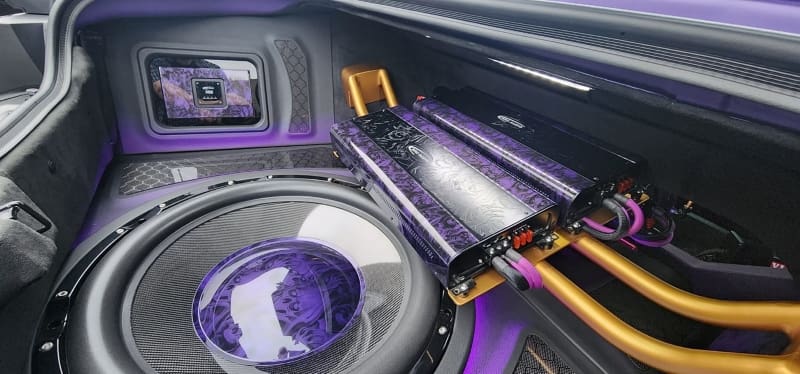
Track 1: Carl Orff, Carmina Burana’s ‘O Fortuna’
Before we get into the technical analysis of this track, we should explain a little background. Carmina Burana, written by Carl Orff in 1937, is a cantata (or music collection) intended to be sung with instrumental accompaniment. By comparison, an aria is sung by a soloist, and a sonata is intended primarily to be played on instruments. The opening and closing chorus of Carmina Burana, “O Fortuna,” has been used in movies, TV commercials and television shows dozens if not hundreds of times. Carmina Burana has been performed in its entirety by many orchestras over the decades. We’ve chosen the 1990 recording by the London Philharmonic Chorus and the London Philharmonic Orchestra. At 1:33 into the track, the kettle drums have strong fundamentals down at 27 Hz. This isn’t infrasonic, but being able to reproduce these frequencies with authority adds emotion to the presentation.

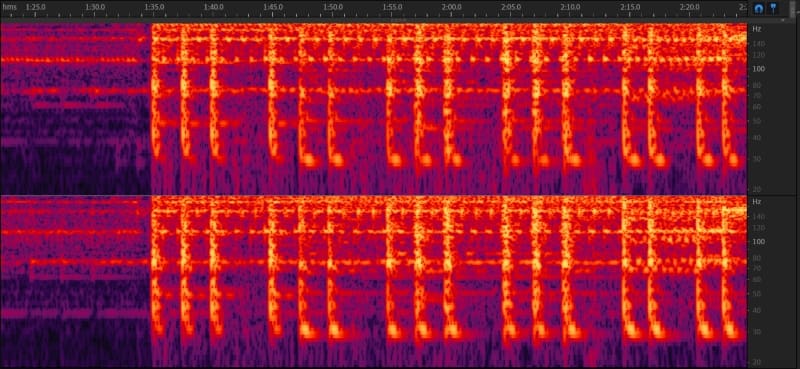
Track 2: Ariana Grande, ‘Thank U, Next’
An unsuspecting track is “Thank U, Next” by Arianna Grande, which was released as a single in 2018. This track blends pop and R&B elements with an impressively deep bass line. According to our research, the song is about the public break-up of Ariana with her then-fiancé Pete Davison. Billboard magazine considers it one of the top 100 songs that defined the 2010s, and it’s on Rolling Stone magazine’s 2021 release of their top 500 songs of all time.
From a technical and bass aspect, the chorus that starts 44 seconds into the track has a solid note centered at 24 hertz with moderate information well below 20 Hz.

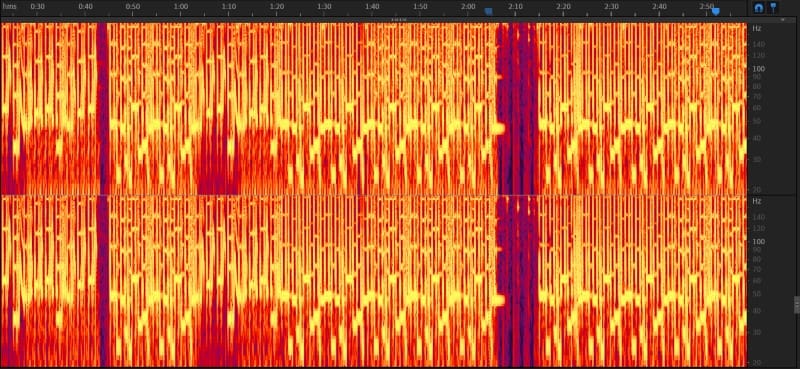
Track 3: Awolnation, ‘Jailbreak’
Awolnation’s track “Jailbreak” from the 2015 album Run has some unexpected rumble scattered throughout. While most of the track has a nice rumbly 35-hertz bass line, they mix in some dips down at 25 Hz to add a little fun. The lowest notes aren’t at the same amplitude, but a beefy subwoofer system can still recreate them faithfully and add fun to this unique track.

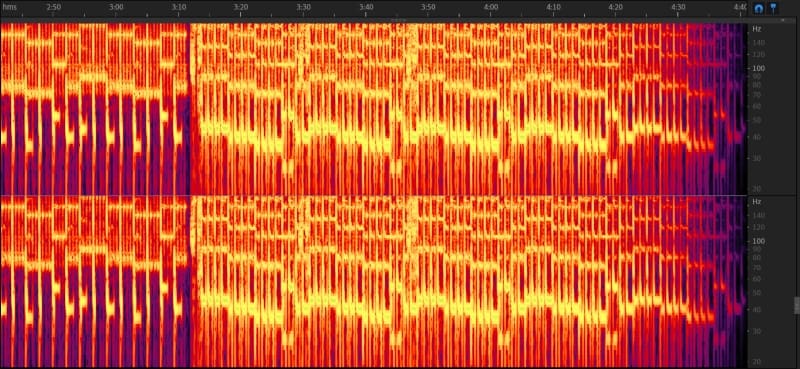
Track 4: Daft Punk, ‘Harder, Better, Faster, Stronger’
The French duo Daft Punk released the original version of “Harder, Better, Faster, Stronger” in 2001 on their album Discovery. They also released a four-track maxi-single with a version called “Pete Heller’s Stylus Mix.” This version of the well-known track contains a repeating bass beat that includes the typical 60-hertz boom with a nearly equally loud beat that follows closely at 19 Hz. Most car audio systems will have trouble with this one. Enjoy with caution.

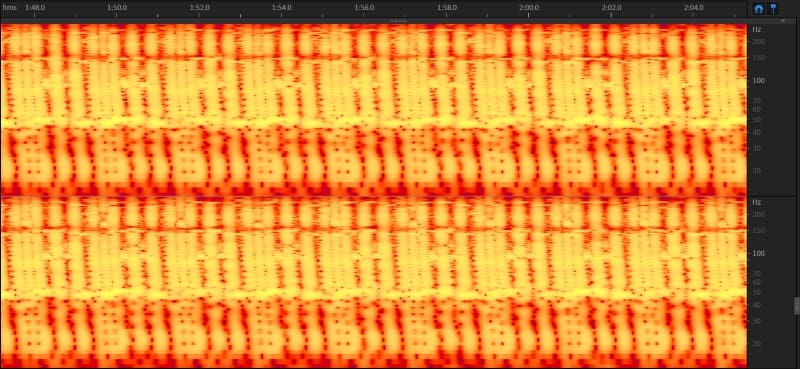
Track 5: Nine Inch Nails, ‘Discipline’
Here’s a track that matches the modern pop music recipe, with most of the bass line not going below 40 Hz. However, Nine Inch Nails built a little treat into “Discipline”: At the 3:02 mark, a bass sweep starts at 23 hertz and heads up to about 200 hertz. It only lasts about six seconds, but it’s a fun bit of rumble to break up the otherwise classic NIN track. “Discipline” is track 4 on the 2008 album The Slip.

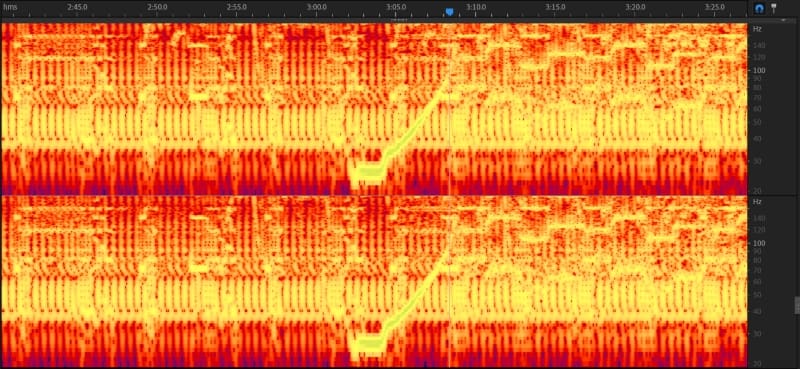
Track 6: Phantogram, ‘I Don’t Blame You’
Sarah Barthel and Josh Carter started Phantogram in 2007. Their 2013 Voices album features a track called “I Don’t Blame You.” Mixed into some sampled static repeated throughout the track are our first consistent dives into the infrasonic region. With the fundamental frequency being at 19 Hz and accompanying harmonics that stretch down toward the single digits, this is going to be a workout for even the most robust subwoofers and amplifiers.

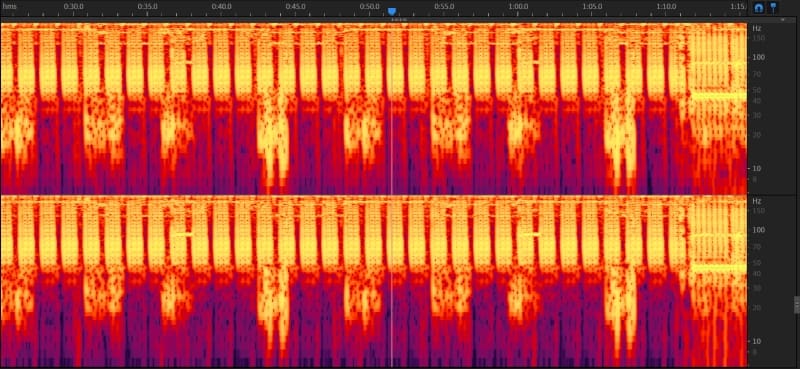
Track 7: Peter Gabriel, “Jigalong”
Released in 2002, Long Walk Home: Music from the Rabbit-Proof Fence is the fourth soundtrack album by the renowned English musician Peter Gabriel. The album is described as being “atmospheric, often ominously so.” The first track on the album, “Jigalong,” opens with an ethereal background that might be crickets or birds and owls, punctuated by two slow synthesized drum beats that are focused at 30 Hz. These alone are a good challenge for most systems, but it’s only the beginning. As the track progresses, a guitar joins in as the effects evolve more toward music. At 2:10, it starts to sound like a song, and the first tease of low-frequency information happens at 2:14 with a dip down to 24 hertz. A few seconds later, the frequency drops to 22 Hz with some harmonics down to mid-teens. The track definitely feels more like a movie score than a song, but it’s still a good challenge.

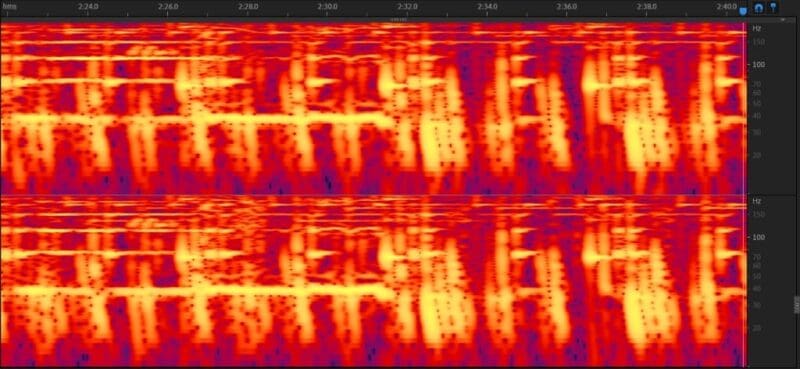
Track 8: Prodigy, ‘Everybody in the Place’
If we could give a band an award for building excitement with the introduction part of each song, Prodigy would be at the top of a short list. Their song “Everybody in the Place,” from the 1992 album Experience, opens with some sound effects, and the words “Let’s Go” are repeated as a subtle bass line with content from 10 to 100 Hz, filling the listening room. At the one-minute mark, a hard-hitting 54-hertz bass line is mixed with a solid rumble down at 11 Hz. The infrasonic information is down 10 dB, but it’s never-ending in this electronic dance track.

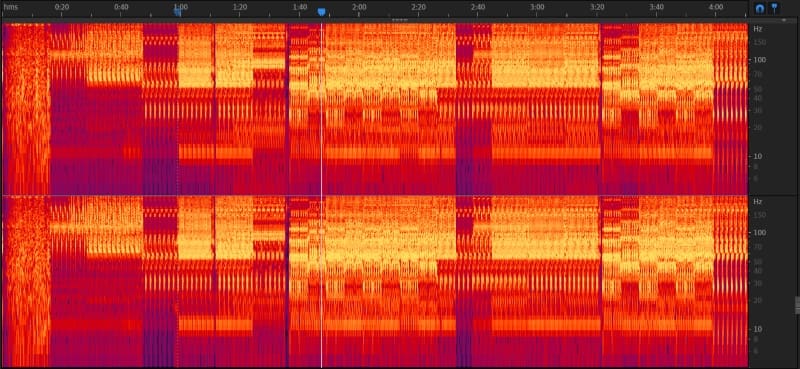
Track 9: James Blake, ‘Limit to Your Love’
Until I started researching songs for this latest article, I’d never heard of James Blake or knowingly listened to any of his music. The English singer, songwriter and record producer popped onto the scene in 2010 with a few EPs and a self-titled album. His second single, “Limit to Your Love,” is the focus here. The track opens with a piano and Blake singing. At the 56-second mark, all heck breaks loose! The bass line has amplitude peaks at 19 hertz with solidly loud information down at 16 cycles. I must admit, it doesn’t fit with the song, but man, it’s a lot of fun!

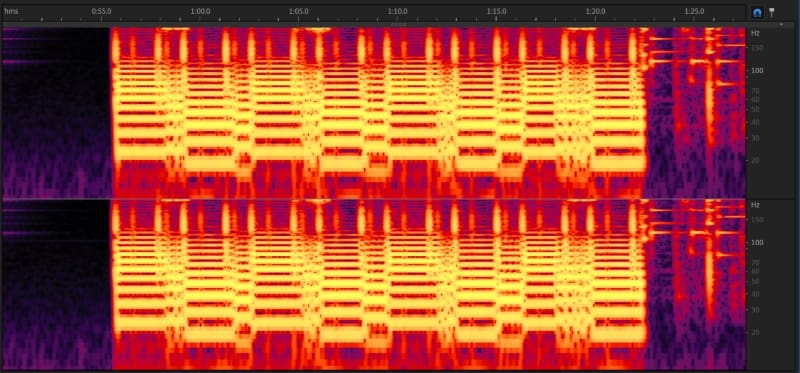
Track 10: Billie Eilish, ‘NDA’
I’ve used a lot of Billie Eilish tracks during my product evaluations. For the most part, they are very clean and clear recordings. “NDA,” track 13 on her 2021 Album Happier Than Ever, has two sections, 1:00 to 1:18 and 2:20 to about 3:07, where her voice sounds clipped and distorted. While this is likely just a weird processing effect, these periods share a bass line that extends solidly down to 22 Hz. It’s mixed with a lot of upper bass frequencies, so it doesn’t stand out. However, your subs are in for a workout.

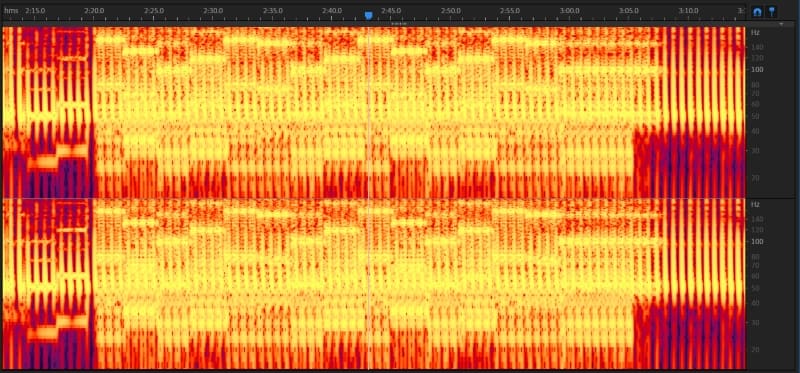
Track 11: Infected Mushroom, ‘Black Velvet’
In 1989, Alannah Myles gave us the popular song “Black Velvet.” It was played all over the radio and still sees regular rotation on stations that play what are now deemed oldies. Combine this country rock classic with the Israeli-based duo of Erez Eisen and Amit Duvdevani, known as Infected Mushroom, and you have the new “Black Velvet” from the 2022 album IM25. The vocals are masterfully performed by Ninet Tayeb, and the bass line is, well, a trace/house classic. Mix a deep bass line centered around 35 to 40 hertz with three sweet bass drops to 20 hertz, and you have a subwoofer-mangling classic that’s fun to listen to!

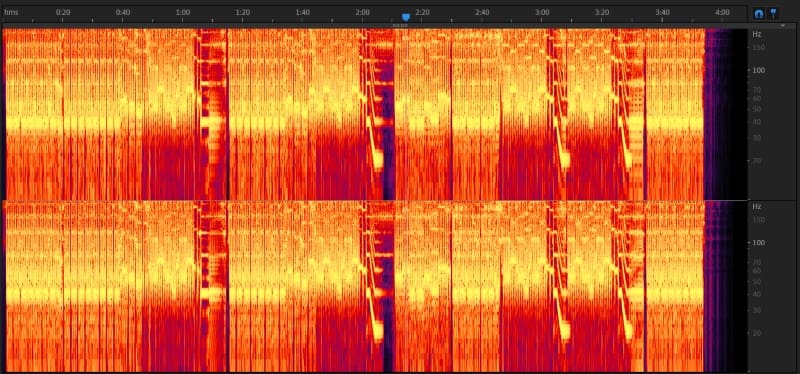
Track 12: Infected Mushroom, ‘Lies and Deceptions’
We will wrap this up with a genuine “I don’t know what to do with this information” award to “Lies and Deceptions” from the same Infected Mushroom IM25 album. Over the years, I’ve looked at the spectrograph and output waveforms of hundreds, if not thousands, of songs. I’ve never seen a track with this much infrasonic information. I’m talking about overall track amplitude peaks at 1 hertz. Most source units, amplifiers and signal processors won’t reproduce frequencies that low with any significant amplitude. So, while it’s there, I’m not sure you’ll ever get to hear it.
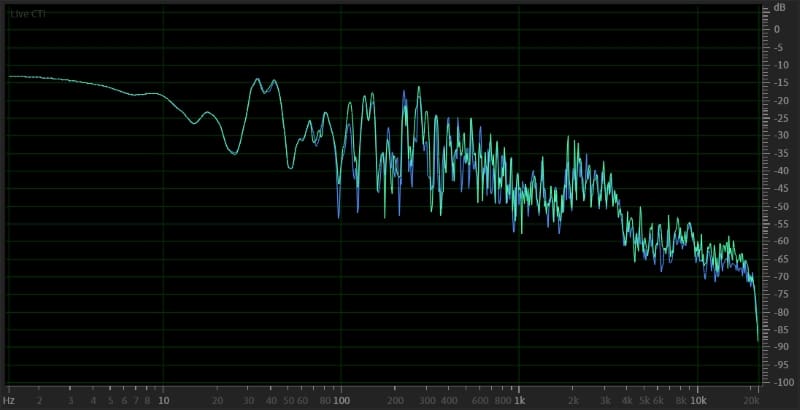
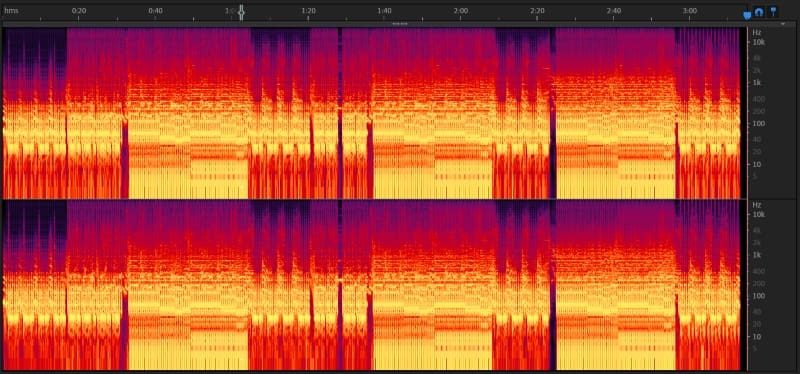
Put Your Subwoofers to the Test With These Basshead Songs!
If you’re feeling brave, these are 12 tracks that will do things to your subwoofers that most people have never heard before. We weren’t joking about being cautious with the volume control, either. If you’ve set the subwoofer amp gains with a 40-hertz tone, these tracks will likely drive your amp into clipping. They will definitely be hard on subwoofers in ported enclosures. Listen first at half-volume, then work up from there. If you know of a track that would be great as part of a Volume 3 collection, share a link to it on our Facebook page!
